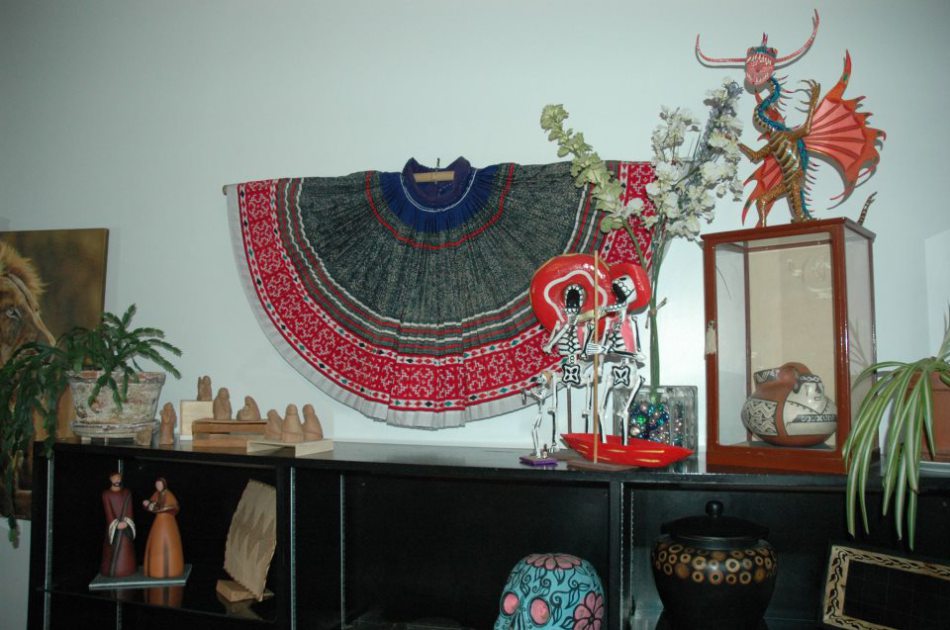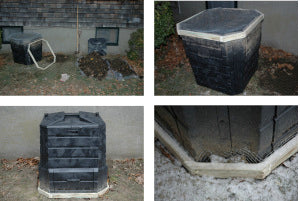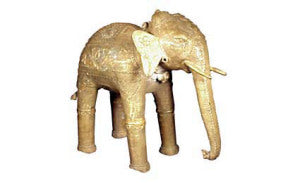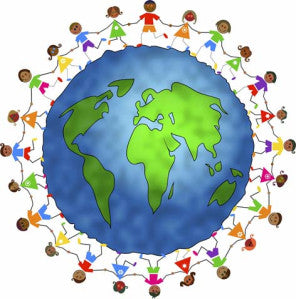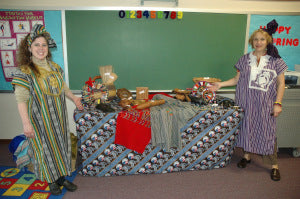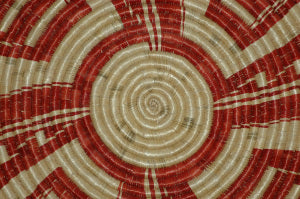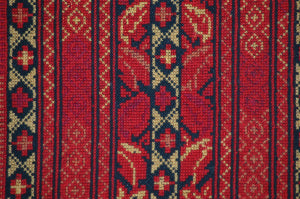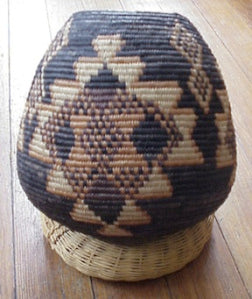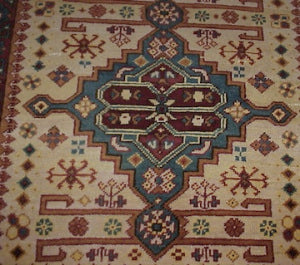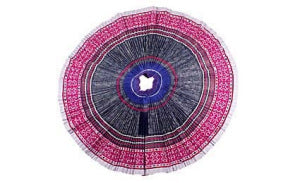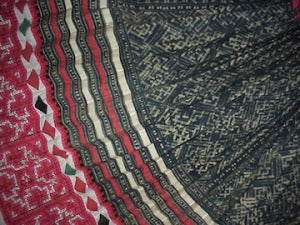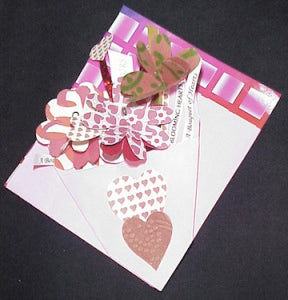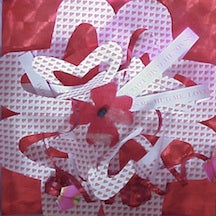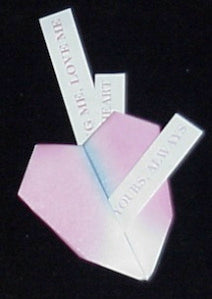CADEAUX du MONDE's Blog
Calculating ROI for your Social Media Marketing Campaign March 7, 2014 19:24

The attached PDF is from a recent Power Point presentation that I did on "Calculating ROI for your Social Media Marketing Campaign". This blog post is a compilation of my notes from the presentation. Calculating ROI for your Social Media Marketing Campaign
Definition of ROI:
To start, we have to have an understanding of ROI (Return on Investment). On paper, ROI could not be simpler. To calculate it, you simply take the gain of an investment, subtract the cost of the investment, and divide the total by the cost of the investment. Or:
ROI = (Gains – Cost)/Cost
Return on investment - or ROI - is the rate of revenues received for every dollar invested in an item or activity. In a marketing sense, knowing the ROI of your advertising and marketing campaigns helps you to identify which techniques are most effective in generating income for your business. It's also important to note that your time invested in your marketing campaign also has a cost co-efficient.  Continue reading
Continue reading
Social Networking for the Business Person with No Extra Time July 10, 2012 14:28
Social Networking Presentation
I gave the attached PowerPoint Presentation at robinTime this past May as part of the Wednesday evening TechSavvy series cosponsored by Newport County Computers/ATC Tech. The following post is a compilation of my notes that accompanied the PowerPoint presentation, so be sure to look at the attached PowerPoint while reading the post.
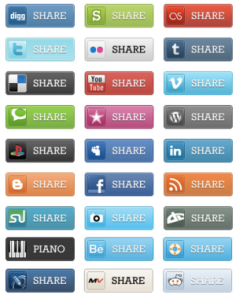
As many business people have already started to use social media, I geared the presentation and this post towards the supposition that the reader (audience) has at least one social media account. In addition, as I have gained much of my social media savvy through my efforts to market my own small business, I have used my social media accounts as examples. Continue reading
Creating & Managing a Certified Wildlife Habitat May 1, 2012 14:40
I gave the attached PowerPoint presentation, "Creating & Managing a Certified Wildlife Habitat: The Challenges & Joys of Gardening With and For Nature via National Wildlife Federation Guidelines", this past week at Newport in Bloom's 30th Anniversary annual Spring Gardening Workshop which was a part of Newport Arboretum Week.
I have included my notes from the presentation here in the following paragraphs to further illuminate the subject.
Why is it important to do this? Many people equate wildlife habitats with large land tracts such as national parks, public spaces or African game reserves. There is a tremendous loss of green space in built-up urban environments and small size plots such as household gardens, rooftop gardens, patios and even porch gardens become important. An economy of scale can be created with numerous small habitats and wildlife corridors can be formed in the urban environment. The collection of these small habitats evolves into sustainable gardening practices on a much larger scale which can have a potentially significant positive environmental impact. Continue reading
Social Media Basics--Part One March 22, 2012 13:30
I gave this presentation about Social Media to our gallery group recently and I was so pleased with the results that I decided to share this in a series of posts over the next few days.
Remember Social Media is Interactive
1. Facebook:
a. Have a business account on Facebook and set up your user name. For example, I obviously wanted my user name to match my gallery name--www.facebook.com/CADEAUXduMONDE.
b. Take advantage of the new Timeline on Facebook. I've read and heard a number of complaints, but I think the visuals are far superior with Timeline allowing you to make a nice impact with all of the following:
i. Cover photo--Choose something that captures the essence of your business visually. I think this photo does an excellent job of communicating the quality and diversity of the fair trade folk art that I market.
ii. Pinning--This feature allows you to pin something to the top of your page for seven days. For example, the Newport Gallery Organization is participating in the upcoming Spring Into Art program. We have pinned that program to the top of our group page-- www.facebook.com/NptGalleries.
iii. Highlighting--This feature is great for large photos. I used this for "Before" and "After" shots for Four Seasons Repairs facebook page--www.facebook.com/FourSeasonsRepairs.
c. Remember social media etiquette (80/20 or 70/30). It's not all about you and your business. Share and participate in what your network is doing.
i. Take time to look at the “Home” on your business page and “like” or comment on others.
d. Build your business network and do it cooperatively. You want people to help you network your business so you need to remember to return the favor.
e. Post events/Invite friends
f. Do specials for your Facebook followers. Your Facebook followers want to know what's going on with your business, want to be able to participate and get the benefit of something exclusive to that loyal group.
My next post will be some tips and basics on Twitter.
CADEAUX du MONDE gallery tour circa 2009 March 22, 2012 12:26
http://www.youtube.com/watch?v=IsZa7tnts3gReminiscing about the gallery now that we're completely online
Compost Bin Therapy May 1, 2011 14:02
Guest Blog by Nord Lange, Winter 2011
My compost bin sits on the side of my house in Rhode Island. Everything was going smoothly for several months after it was started. Vegetable and fruit matter interspersed with layers of leaves were composting efficiently. My household garbage disposal was minimal, typically about one plastic shopping bag a week, and it was characterized by minimal odor. Like everything in life however, this blissful decomposition sequence was destined to change. The first intrusive sign was a small hole in the ground at the base of the bottom left side of the bin, which was followed shortly by a second hole on the front side of the bin. I assumed that these holes were made by cute, cuddly mice, so I simply plugged them with rocks, and didn’t give it much thought until I started noticing what looked like tunnels in the compost. I did not connect the dots until one day I was greeted by a beady pair of eyes on what I took to be a rat snout. The sturdy tail at the other end seemed to confirm my suspicion. The blissful character of the compost bin was forever changed. It had transformed from a pastoral decomposition site doing nature’s bidding to a rodent breeding ground that was going to be the epicenter of a bubonic plague outbreak. What to do?
I was propelled into action a few days after the alleged rat’s appearance, when a half-eaten orange was pulled down one of the tunnels while I was depositing another gourmet meal into what had clearly become a rodent restaurant. After some deliberation, I came up with the idea of placing a subterranean wire mesh fence in a trench around the perimeter of the bin to a depth of at least eight inches. Someone suggested putting dog hair from a local pet groomery in and around the bin, and another suggestion involved plugging the entry holes with steel wool. Fortunately, before implementing any of these plans, I met one of the Worm Ladies (www.wormladies.com) at the Saturday Pawtucket Farmers’ Market (www.farmfreshri.org). She (I’m not sure if it was Nancy or Susie) suggested placing a sheet of wire mesh under the bin, and then bending a few inches of excess around the sides. I had obviously not thought of this scheme because it was totally logical, practical and efficient.
The Worm Ladies’ idea was implemented as follows:
- A sturdy piece of wire mesh from the local hardwood store and 12 feet of 1x2 inch lumber were purchased.
- The compost bin was emptied.
- A piece of the wire mesh was cut so as to extend approximately 3 inches beyond the bin outline on all sides.
- An octagonal frame was constructed slightly larger than the compost bin so as to provide a tight fit with the folded pieces of the wire mesh.
- The wire mesh was put in place and secured with the octagonal frame.
- The bin was situated back in its place on level ground and refilled.
- Rocks were stuffed into the corners between the frame and the mesh. This was probably unnecessary, but it reflects my obsessive nature.
Now, in case any amongst you is intimidated by the precise fitting octagonal frame, please don’t be. That was merely my exuberant addition to exercise some of my languishing carpentry skills. Bending the wire mesh up against the walls of the compost bin and securing it with rocks is perfectly fine.
At least three months have passed since the retrofit, and there’s no sign of the furry invaders. Given the fact that we’ve had cold weather, and that the bin provides an extremely enticing meal in a cozy setting, I would like to think that my implementation of the Worm Ladies’ solution is doing the job. Actually unless one of these furry fellows has wire cutters or the wire mesh corrodes completely, I think my bin is off limits. If that changes, I’ll provide an update, but until then, happy composting.
One final word about my visitors….. Before the wire mesh fix, while emptying more goodies into the compost bin, I would tap the bin to disturb any freeloaders. I never saw another rat, but on at least two occasions, an extremely chubby mouse made a hasty exit, almost running up my leg once. He looked cute and he was definitely substantial. I never actually saw the rat after the alleged first sighting, so now I’m left questioning whether it was a manifestation of my suppressed subliminal fears. I’ll keep that on the list of things to discuss with my barber, once we’ve finished addressing my teenage insecurities. (Actually, I’m convinced I saw a rat. I’ve always wanted to say that.)
The pictures below illustrate the steps outlined above. It actually snowed the day I did this, thereby putting a nice touch on the fresh start.
Exploring Lost Wax Casting March 23, 2011 16:54
Lost wax casting is one of the oldest types of casting. It is a tradition that dates back over 4000 years and its current practitioners are found in many tribal cultures around the world. Before we explore some of those varied traditions, we need to define the process.
In principle, "lost wax" casting means that first a wax model of the desired piece is made. This piece is then covered with slip, usually made from finely pulverized charcoal and clay which is then covered with a mud/dung mixture to form a mold. After drying, the mold is heated, causing the wax to melt and molten metal is poured into the mold replacing the wax. After cooling, the mud/dung mold is broken away to reveal the metal replica of the original wax model. As both wax model and clay mold are destroyed, each piece is unique. Solid casting and hollow casting can be done using this process. In addition, because the original is fashioned using wax, there is an extraordinary level of fine detail that can be achieved.
Brass and bronze "lost wax" casting are part of a vibrant folk art tradition in West Africa, India, Thailand and the Philippines with ancient roots that continue in those communities up to the present day. In India, this type of metal casting is known as Dhokra and in West Africa--"cire perdue".
Brass is an alloy formed from copper and zinc and bronze is an alloy formed from copper and bronze. In the past, the brass and bronze alloys were formed from smelting copper, zinc and tin. Today, the majority of "lost wax" brass and bronze castings are handcrafted using recycled metal, often old plumbing parts or other industrial pieces which lends an added 21st century "green" dimension to these unique pieces.
The Camerounian Face Mask pictured above was handcrafted in the Northwest Province of Cameroun, West Africa and is an example of a solid casting. Typical of the "lost wax" brass work in that region, the mask is highly polished in parts as well as blackened in other areas to add dimension to the overall design and effect of the piece.
The highly detailed work on the Indian Dhokra Elephant pictured above was achieved using the technique of constructing the wax original from finely rolled wax threads. This dynamic piece, an example of hollow casting, was cast in two parts--the head and the body--which were then bolted together to form the elephant sculpture.
T'boli craftsmen in the Philippines refer to "lost wax" casting as a process that unites earth, water and fire. To see and explore more examples of the varied "lost wax" casting traditions from the developing world, stop by our gallery, CADEAUX du MONDE, 26 Mary Street, Newport, RI or check us out on the web at www.cadeauxdumonde.com.
Bring the World Into Your Classroom in 5 Easy Steps March 5, 2011 18:11
When my partners and I opened CADEAUX du MONDE, our green, fair trade, international folk art gallery, we decided to also include an educational component--teaching multicultural workshops and giving development education lectures on fair trade and socially responsible travel and tourism. Luckily for our vision, this coincided with a push in our area and around the US to have multicultural education included as part of the regular curriculum. Twenty-four years later, the world is even more interconnected and it is more important than ever for us all to embrace and celebrate our similarities as well as our differences. We truly have so much to learn from each other!
We have been presenting our participatory multicultural workshops focusing on different regions in Africa, the Indian subcontinent and Central America in both public and private schools in Rhode Island and Southeastern Massachusetts since 1987. Based on the overwhelmingly positive response we have received over the years, I think that we have a winning formula on how to engage children from pre-school through high school. Every educator knows that engaging students is a big part of getting them to learn and retain what they learn.
The following are our core suggestions to educators on how to "Bring the World Into Your Classroom in 5 Easy Steps".
1. Schedule a workshop--choose a country or region to cover.
a. Look at the calendar and coordinate with international or US holidays or events (thematic approach) i.e. February "Black History Month"--Africa, Chinese New Year--China, Pan American Day (April 14)--Latin America, UN Days, Independence Days (i.e. September 15 is Independence Day in Guatemala, El Salvador, Costa Rica, Honduras and Nicaragua), Mother's Days (May 8--USA, Germany and Guatemala), Children's Days and Labor Days (May 1--Mexico).
2. Use your resources.
a. Go to the library to do research (Adult as well as Children's Section) and look for books on Language, Stories, Songs, Games, Tapes or Records, Recipes, etc.
b. Try anthologies and international collections.
c. Maintain accuracy of information presented.
d. Use parents (Find out who has an international/ethnic background or who is well-traveled through surveys and questionnaires. They are a resource for information as well as artifacts and clothes.)
3. Assemble a culture kit (either temporary or permanent) to help you present the workshop. Include books, CD's, fabric, jewelry, instruments, stamps, coins, photos, etc.
4. Plan your workshop. Outline what you plan to present and put it into a timetable.
Sample West Africa Workshop Outline
a. Geographic Literacy illustrated with map and culture kit items (10-15 min.)
b. Language--Sango Conversation (10 min.)
c. Story--"How the Animals Got Their Tails" (10-15 min.)
d. Games--Stomp Game and String Game (10-15 min.)
e. Dancing--Beguine and Makossa (10-15 min.)
f. Refreshments--Fresh tropical fruit such as bananas, pineapples, oranges, mangoes, passion fruit and coconuts can be served alone or with plain yoghurt sweetened with sugar. In addition, fried plantain are a common West African snack.
5. Present your workshop.
If putting the aforementioned workshop together inhouse all seems too complicated, you can bring in our staff to do all of the above for your class (provided you're located in New England). The following is our CADEAUX du MONDE Multicultural Workshop Flyer:
If you’re looking for an exciting, stimulating and, most important, educational multidisciplinary multicultural program to augment you curriculum, look no further.
Let the staff of CADEAUX du MONDE bring the world to your classroom
Our staff is available to present our participatory one hour workshops featuring these areas of the world: West Africa, East Africa, Southern Africa, the Indian Subcontinent and Central America Each of these multicultural hands-on programs is tailored to the age and ability of your students and to fit into your curriculum. All of your students will be dressed in the authentic clothing of the particular region of the world that they are studying. Cultural differences and similarities will be discussed as the students examine everyday objects. They’ll learn simple phrases and sentences in the language of the region and end this action packed hour by learning a dance or playing a game.
These very popular workshops have been presented in both public and private schools in Rhode Island and Southeastern Massachusetts since 1987 to classes ranging from pre-school through seniors in high school. Institutions include: Rogers High School, East Greenwich Public Schools, the Swinburne School, Learning Connection, Newport Public Library, St. Michael’s School, Nashoba Brook Country Day School, Sheffield School, Underwood School, Sullivan School, Lucy’s Hearth, Martin Luther King Center Day Care Program, Beginnings, Narragansett Pier School, Community Prep School, Countryside Children’s Center, McCauley Village, Newport County Head Start, Portsmouth School System and John Greene Elementary School.
We have conducted teacher training sessions for the New Enlgand Educational Media Association Conference, the Early Childhood Learning Conference and the South County Montessori School. In addition, we have given development education lectures on fair trade and socially responsible travel and tourism on undergraduate and graduate university levels at Salve Regina University and Johnson & Wales University.
Workshop Format
One hour; limited to 25 students. Each session includes: sections on geographic literacy, object literacy illustrated with photos, artifacts, instruments, clothing and jewelry, basic language instruction, stories*, games*, and music and dance from the region.
*These sections can be eliminated if you have time constraints or wish to have more emphasis on another section.
We encourage you to coordinate a lunch or snack with your parents’ group so that your students will have a complete multicultural experience of the area of the world that they are studying. We can provide simple recipes using authentic, but readily available ingredients.
Costs
*WORKSHOP: $95.00 per hour
*TEACHER TRAINING: $190.00 per 2 hour session
*A travel fee is added for locations outside Newport County
Multicultural Teaching Staff
Katie Dyer: For 24 years, a self-employed managing partner of CADEAUX du MONDE, an eclectic, green, fair trade, international folk art gallery. Arranged and conducted numerous trade missions abroad. University of Pennsylvania graduate. Returned Peace Corps volunteer. Fluent in French and Sango. High school math professor, multicultural education teacher and lecturer, small business consultant.
To Schedule a Workshop or Teacher Training Session, contact:
CADEAUX du MONDE, 26 Mary Street, Newport, Rhode Island, (401)935-0550, info@cadeauxdumonde.com
Fair Trade--Practically Speaking February 26, 2011 12:00
When my partners and I opened our gallery, CADEAUX du MONDE, back in November 1987, the term being used for fair trade was "alternative trade". At the time, it was a concept that was not part of the mainstream marketplace. We have devoted a great deal of time to educating our customers about the concept with the intent of raising awareness and fostering the idea of conscious consumers.
As part of that education process, we developed a handout that we have used for over 20 years to explain how we conduct our business that is still posted in our gallery today as well as on our website. We are very proud that "fair trade" has now become a recognized standard for ethical business as well as our role in shaping that standard. Even so, there still seems to be some confusion around just what exactly "fair trade" means and how that applies to running a commercial business.
Subscribing to the KISS theory (Keep It Simple Stupid), I would like to share the following--the definition of the adjective "fair" as it applies to "fair trade" and the CADEAUX du MONDE description of Alternative Trade (Fair Trade).
fair
What is Alternative Trade?
Alternative trade means fair trade--it's as simple as that. To go a little bit further, when an African basket weaver sets his or her price for his or her baskets, the alternative trader does not use his or her superior economic position to force a reduction in price. In that way, he or she trades with an artisan as an equal--no exploitation is involved in this type of business relationship. The artisan is accorded the dignity due an equal.
Through alternative trade, fair prices paid directly to artisans from developing nations (Africa, Asia, the Caribbean, Central and South America and the South Pacific), village-based development is encouraged which means access to clean water, health care and education for the local population. In addition, alternative trade fosters global awareness as consumers are informed about the peoples and cultures who craft the exquisite folk art items that they purchase.
The consumer at an alternative trade store can shop with confidence knowing that his or her purchase has not impoverished, but rather enriched the lifestyle of a village artisan overseas.
CADEAUX du MONDE is Rhode Island's only green fair trade international folk art gallery. For a more detailed and extensive definition of "fair trade", check out the International Fair Trade Association (IFAT). The majority of artisan cooperatives that are represented in CADEAUX du MONDE's gallery are members.
What Is Folk Art? February 19, 2011 17:57
I have been selling folk art in our gallery, CADEAUX du MONDE, since 1987. Invariably when people ask me what I do for a living and I respond that I am one of the owners of a green fair trade international folk art gallery, after an initial quizzical look from the majority of questioners, I hear the inevitable next question "What is folk art?".
After 24 years of sourcing and buying folk art directly from the artists who produce it, studying about the various traditions and sharing it with the public in our gallery, I am fairly sure that I know what folk art is and I am also reasonably confident that I can communicate that knowledge to the public. When I was getting ready to write this post, I looked at The American Heritage Dictionary definition listed below.
Definition: "folk art also folk-art (f k
k ärt
ärt )
)
 -art
-art adj.
adj.The American Heritage® Dictionary of the English Language, Fourth Edition copyright ©2000 by Houghton Mifflin Company. Updated in 2009. Published by Houghton Mifflin Company. All rights reserved
I think that it is basically a good definition with the exception of the last phrase "unschooled artists". While folk artists generally do not attend art school to learn their skills, they are highly skilled artists, artisans and craftspeople and the majority have spent years learning the cultural heritage, traditions and technical skills needed to become accomplished folk artists.
As folk art is better appreciated when it is seen, not merely described, I have decided to include several examples of different types of folk art from a variety of areas around the world that illustrate the wide range of different mediums that folk art encompasses. The following examples are a testament to the high level of skill and artistry of folk artists as well as the unique cultures that have produced such treasures.
Zulu Beer Basket, South Africa:
The Zulu Beer Basket pictured below is an example of a typical African folk art tradition--basketweaving. Zulu baskets are an integral part of Zulu custom and decorative beer baskets are made for special events, celebrations and as gifts. Handcrafted using the coiling method of basketweaving, the coiled grass is bound and handstitched with shredded Ilala palm leaf. The different colors of the basket are created from natural dyes using berries, leaves, clay, roots, dung or a combination of these. The different designs and patterns on the basket indicate the "lobola"--the bridal price paid in cows to the bride's father.
This style of basketweaving is traditionally done by women who pass the craft, techniques and designs along by teaching their daughters and granddaughters. Many folk art traditions are gender specific and are passed from one generation to the next.
Kazak Afghan Rug, Pakistan:
Oriental rugs have been handwoven for over 2500 years by nomads, in villages and in royal manufactories, and the art is currently practiced in North Africa, Eastern Europe and throughout Asia. Each Oriental rug is unique, integrating patterns brought by traders with traditional ones--daily life can be seen running through the threads.
The image below is a detailed view of the center design of a Kazak Afghan Rug that was handknotted using a Sarouk weave which is a ridge-backed knotting technique by an Afghan rug weaver who is a member of a rug weaving cooperative in Peshawar, Pakistan. This rug is double-wefted and has 150 knots per square inch. Many skilled rug weavers can tie 40 knots a minute. The art of handknotting is still today passed down from one generation to the next with parents and grandparents teaching the younger generation on family looms at home.
Blue Hmong Skirt, Thailand:
The skirt pictured below is part of the traditional everyday attire for Blue Hmong women who live in villages north of Chiang Mai, Thailand. It was handcrafted by a Hmong craftswoman in Chiang Mai, Thailand. An incredible and vibrant example of wearable folk art, this elaborately accordion pleated skirt features indigo dyed block printed batik fabric, reverse applique and cross-stitch embroidery. The second image shows the intricate design and detail of all of the various textile arts that have been employed to create this magnificent piece.
For further examples of fabulous folk art which truly demonstrate "the extraordinary in the ordinary" and to hear more of the stories surrounding these vibrant cultural pieces, you can check out our gallery, CADEAUX du MONDE at 26 Mary Street in Newport, RI or our website at www.cadeauxdumonde.com.
Tips, Techniques & Ideas on Making Your Own Valentines Using Papercutting, Origami & Other Techniques February 12, 2011 17:11
One of our favorite "Galerie Escalier" artists is Greta Kessler, a talented artist and craftsperson who has shared her skill at making truly beautiful handmade Valentines using papercutting, Origami and other techniques in an annual workshop at CADEAUX du MONDE for the first Newport Gallery Night in February over the past several years. I am going to share a brief overview of some of her tips and techniques here. You can also come into the gallery to view some of Greta's wonderful Valentines which are, of course, the best demonstration of her fine work!
1. Envelope Selection:
Before you get carried away doing your one of a kind creation for your loved one--choose the envelope that you will be using. You don't want to make a fabulous creation and then get bogged down in a fruitless search for an envelope only to be frustrated at not being able to find the right size. This is a Valentines card so remember to choose an envelope that is unique--nice paper with a good texture and/or color. You can stick with the classic red and pink hues or branch out into some non-traditional colors as well such as green, orange or yellow. With every choice, express your creativity!
2. Decide on Card Style:
You have many options here: a classic square/rectangular card that opens up, a card that unfolds, a card that is just basically a mounting paper for all of your decorations, etc. The list is endless.
3. Start Creating Your Valentine:
Collect some paper--colored, patterned, different weights. Collect some ribbons--paper, metallic,etc. Collect some stray beads, sequins, etc. Print some endearing love messages in colored ink from the computer such as "Yours Always", "Love in Bloom", etc. Then start cutting flat hearts, fold some paper and cut heart shaped snowflakes. The key is to be creative and let your imagination flow.
Paper is a wonderful medium to use--you can cut it, you can fold it into different shapes, you can curl it, you can crush it. You can create pockets or windows with hidden messages. You can make pop up hearts.
The card below is an example of an origami folded paper bouquet holder filled with cut paper flowers, hearts and endearing love notes using a patterned paper, ribbons, glued on beads, etc.
The card below is an example of a 3 dimensional card that can be presented in a handmade box. Using metallic paper as a backing board, the heart paper is folded and cut like heart shaped snowflake and then mounted on the metallic paper. Valentine messages are laced through the open space and other messages are mounted and curled under a cut paper heart shaped flower highlighted with a bead. Other metallic ribbons are curled and decorated with origami folded hearts.
Finally, here is a close up of an origami heart with Valentine's messages. The directions for folding this heart can be found in "The Encyclopedia of Origami and Papercutting Techniques" edited by Emma Callery.
4. Present your creation to your Valentine:
Now that you have put together a Valentine that expresses your creativity in words, hearts, paper, color and beads--share it with your Valentine!!!
Welcome & Hello-- January 27, 2011 23:28
Welcome to CADEAUX du MONDE's Blog. As one of the founders and the current managing partner of CADEAUX du MONDE, an eclectic green fair trade international folk art gallery that opened its doors in November 1987, I have had the privilege of learning so many things by doing. My partners and I had a wonderful idea that turned into a reality that is now in its 24th year--a way that we could marry our vocation with our avocation.
I have shared this story and the many challenges and successes that we have had in many venues--in our gallery, around New England, on trade missions around the world, etc. Now I am going to share again on this blog. Some of the stories and the topics that I want to explore and share include the following--running a green business, engaging in fair trade with artists from over 40 countries in the developing world, showcasing international folk art, educating the public about wearable and decorative art, event planning and using events to promote the arts and artists, marketing on a shoe string, working and engaging in my local business community and local arts community, advocating on local and international issues, raising awareness, and why any of the aforementioned matters. I'm sure that I'll come up with more topics along the way and other wonderful stories that I will want to add to the mix.
I'm looking forward to sharing in a fun and informative way all that I have learned from the many wonderful artists, artisans, business people, et al that have crossed my path on this 24 year journey. Look for my next post inspired by one of my favorite "Galerie Escalier" artists, Greta Kessler and her annual Valentine's workshop that kicks off CADEAUX du MONDE's Newport Gallery Night Season every year in February.



